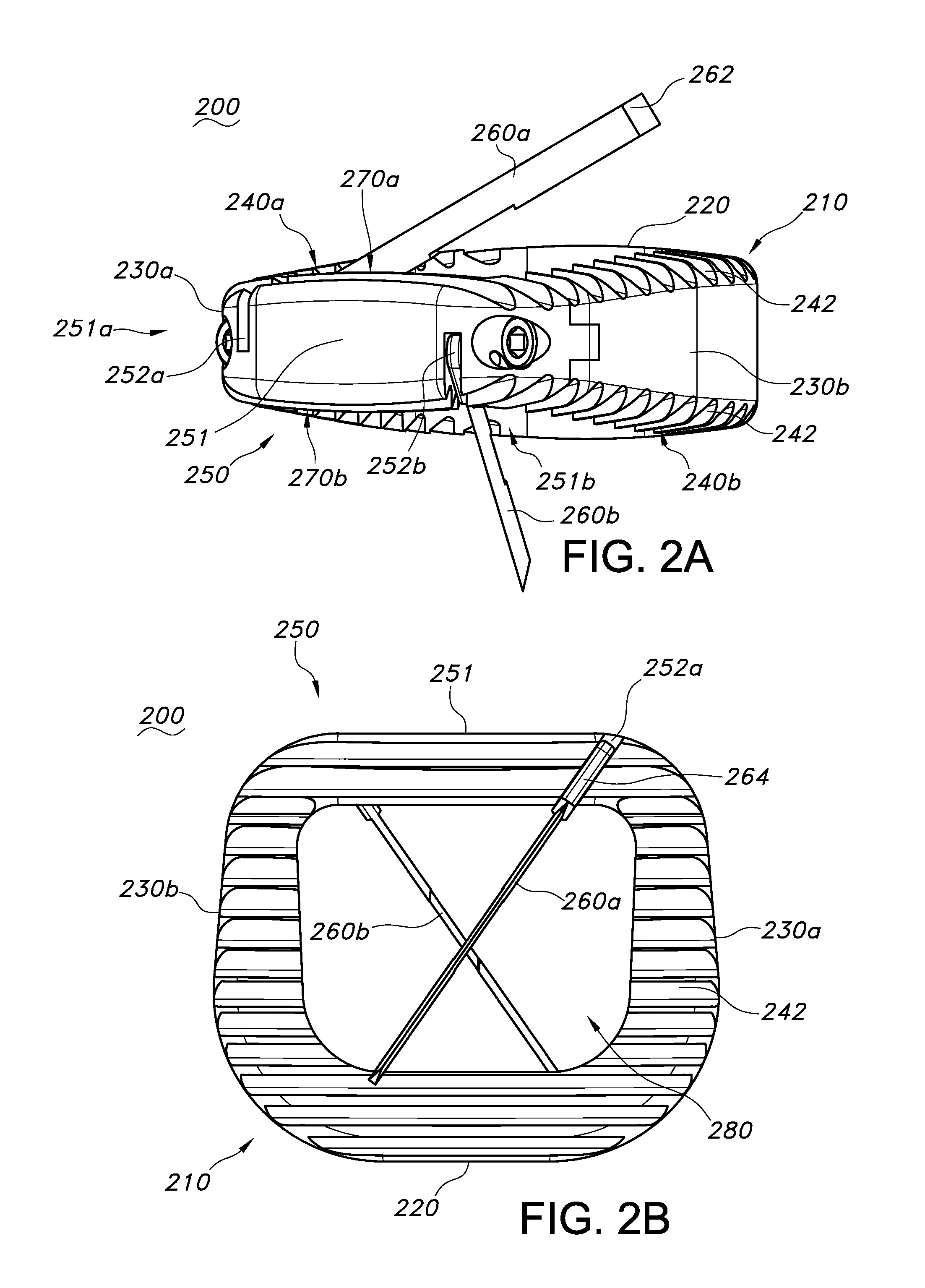Reverse cage intervertebral fusion implants
a technology of intervertebral fusion and cage, which is applied in the field of devices and implants, can solve the problems of chronic back pain, spinal disc or vertebral body displacement, etc., and achieve the effects of promoting bone and fusion growth, improving and safer methods of spinal fusion, and restoring or substantially restoring the natural shape and curvatur
- Summary
- Abstract
- Description
- Claims
- Application Information
AI Technical Summary
Benefits of technology
Problems solved by technology
Method used
Image
Examples
Embodiment Construction
[0023]Low-profile reverse cage intervertebral fusion implants are disclosed herein. The reverse cage implants include a spacer region anteriorly located and an endplate posteriorly located. Reverse cage intervertebral implants are useful for spinal fusion, especially in the lumbar spine. The reverse cage implants are placed within the intervertebral space between adjacent superior and inferior vertebra. Typically an anterior approach is used for placement of the implant, however other approaches can also be employed. The implants restore or largely restore the natural shape and curvature locally of the vertebral region while promoting growth of bone and fusion of adjacent vertebral bodies.
[0024]Some basic terms and measures used to characterize the regions and dimension of the intervertebral space are depicted in FIG. 1. FIG. 1 is a dexter projection into the sagittal plane of the body of the intervertebral space 100 between an idealized superior (upper) vertebra A and an idealized ...
PUM
 Login to View More
Login to View More Abstract
Description
Claims
Application Information
 Login to View More
Login to View More - R&D
- Intellectual Property
- Life Sciences
- Materials
- Tech Scout
- Unparalleled Data Quality
- Higher Quality Content
- 60% Fewer Hallucinations
Browse by: Latest US Patents, China's latest patents, Technical Efficacy Thesaurus, Application Domain, Technology Topic, Popular Technical Reports.
© 2025 PatSnap. All rights reserved.Legal|Privacy policy|Modern Slavery Act Transparency Statement|Sitemap|About US| Contact US: help@patsnap.com



